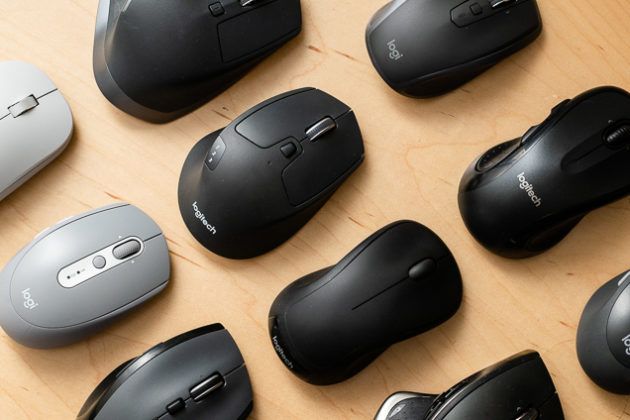In this modern time, a gaming mouse is not a cheap accessory to purchase. If you want to get the top gaming mouse brands, you’ll probably have to spend quite a money.
When you spend more than $50 on a pink gaming mice, every performance issue can be stressful, leading to frenzied Google searches to figure out what’s causing the problem and how to fix it.
It would be best to examine the optical sensor to detect inconsistent cursor movement on the screen or a loss in responsiveness during flicks and movements.
Before you open up your mouse and try to fix yourself (which I strongly advise against), take it to your closest service center, use your warranty, or follow our advice for how to fix an optical mouse sensor, the results might be surprising for you.
Also, below here are some fixes that you can try out to fix your mouse sensor:
How to Fix an Optical Mouse Sensor?
Check the Mouse Skates
Mouse skates are the plastic or rubber parts near the mouse’s heel on the underside. They are placed to give the mouse a slight lift and slide more easily across mousepads.
They may appear to be unneeded, yet they serve a crucial purpose. For the best input and responsiveness, the optical sensor on the mouse should be elevated a few millimeters above the surface.
There is drag and friction when the mouse is flat on the table or mousepad. When there is no space for the light to reflect, the mouse cursor does not respond optimally. As a result, there is a lack of in-game responsiveness and a plethora of rage-inducing circumstances.
Check the skates and make sure they are not caked in the dirt to get the most out of your gaming mouse. Over time, the mouse skates collect dirt and debris, increasing friction and shortening their lifespan. In addition, the mouse skate wears out due to the increased wear and tear caused by repeated rubbing on rough surfaces. This reduces the amount of lift required for gaming mice to perform appropriately.
If your skates appear dirty and grimy, you can clean them with a towel soaking in any standard household alcohol rub/cleaner. When they’re clean, check to see if they’re level with the bottom of the mousepad/table or if they assist in lifting the mouse a tad.
You could shine a light from the opposite side of the mouse to see if there is a sliver of light between the mouse and the surface it is resting on. If there isn’t, it’s time to get a pair of mouse skates.
The majority of the leading gaming mouse brands and their goods have mouse skates that can be purchased and affixed to the mouse’s underside. Various mouse skates available will allow you to move the mouse faster, minimize friction, and give your optical sensor some breathing space, allowing you to perform much better.
Update your Mouse Drivers
Most current gaming mice include their software that allows you to customize the LED lights, dpi, button programming, and extra buttons, and driver upgrades. Use this software to check for driver updates on a regular basis.
One of the biggest causes of performance swings and irregular pointer movement on-screen is outdated drivers. When it comes to high-level gaming, keeping it up to date is critical.
The majority of mouse driver upgrades are tiny to medium-sized downloads. This means you can set up automatic updates and then forget about it. This means that when an update is released, your computer automatically downloads and installs it, saving you the hassle of having to check.
Clean the Mouse Sensor
When inspecting the sensor, make sure the plastic covering the LED light is clear and free of debris. Any dust or dirt particles that settle on the plastic will significantly reduce its performance. This could be the cause of your cursor moving around on-screen or randomly freezing in the middle of a flick.
For the greatest results, use a compressed air canister. If you don’t have one at home or at work, gently wipe down the optical sensor with a small quantity of alcohol on a towel. Remember to wipe it down afterward to avoid any wet patches that will interfere with the sensor’s operation.
Soap or soapy cleaning chemicals, which tend to leave a white residue, should be avoided. After a few cleanings, this may be more harmful than beneficial. If you use a soap-based solution, make sure to clean and dry the sensor before using it completely.
Check the Mouse Pad
Sometimes the problem is with the mouse pad or the table surface. Look for lumps, bumps, or divots in your mousepad. With persistent contact, the plastic outer coating on top of the foam may rip or bubble up.
This is a major issue for mice, and when playing high-octane shooters, the last thing you want is a sudden jump or uneven movement of the crosshair while taking aim.
Invest in a large mousepad that spans the bulk of the table on which your PC or laptop is set up. We recommend a mousepad that is at least 20 inches long (preferably more). This allows you to roam around and always find a level, suitable surface for your mouse to rest on for the best performance.
Conclusion
The mouse sensor is the most critical component of the mouse and should be kept clean and free of debris or dirt at all times. However, if you fail to fix your mouse then you better think of getting a new mouse.
